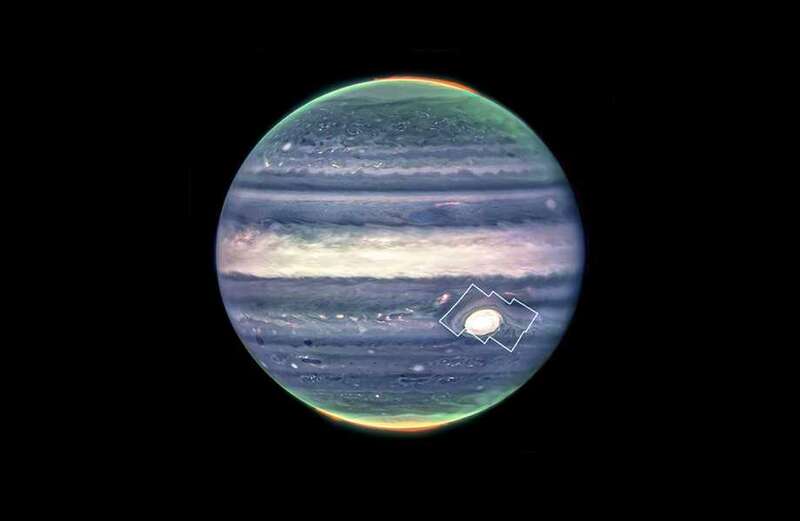MYSTERIOUS glowing spots have been discovered above a raging storm on Jupiter, and scientists are trying to figure out just what they are.
Jupiter's Great Red Spot has been a point of interest since it was observed by the James Webb Space Telescope in 2022.

The telescope, a joint venture between Nasa and space agencies in Canada and Europe, can capture planetary structures with unprecedented accuracy.
Scientists set their sights on the Great Red Spot for a reason. It is the largest storm in the solar system - over 10,000 miles wide - and has been raging for centuries.
Even then, they were shocked to uncover a previously unknown structure above the blustering storm.
 Charming UK village is 'UFO hotspot' with 'NASA scientists showing interest'
Charming UK village is 'UFO hotspot' with 'NASA scientists showing interest'
“We thought this region, perhaps naively, would be really boring,” team leader Henrik Melin said in a press release.
“It is in fact just as interesting as the northern lights, if not more so. Jupiter never ceases to surprise.”
Jupiter is not only the largest planet in the solar system but one of the brightest objects in the night sky.
It sports brilliant lights at its northern and southern polar regions. Other than that, the glow from the upper atmosphere is weak, making it difficult for telescopes to pick out fine details.
This is where Webb comes in. The telescope is equipped with an instrument called the Near InfraRed Spectrograph that picks up on wavelengths far outside the range of human sight.
This special tool allows scientists to study the Great Red Spot with never-before-seen precision.
Beyond the vibrant polar lights, much of the planet’s upper atmosphere is influenced by incoming sunlight closer to the equator.
Jupiter receives only 4% of the sunlight received on Earth, so astronomers anticipated this region to be rather homogeneous.
The team sought to investigate if this region was as dull as it seemed, and zeroed in on the Great Red Spot.
They were surprised to find "a variety of intricate structures," including dark curves and bright spots, across the entire field of view.
 Astronomer leads hunt for Northern Lights 'sound' rarely heard in the aurora
Astronomer leads hunt for Northern Lights 'sound' rarely heard in the aurora
The observations spurred on a new conclusion: another mechanism could be altering the shape of the upper atmosphere.

"One way in which you can change this structure is by gravity waves - similar to waves crashing on a beach, creating ripples in the sand,” Melin explained.
"These waves are generated deep in the turbulent lower atmosphere, all around the Great Red Spot, and they can travel up in altitude, changing the structure and emissions of the upper atmosphere.”

The team hopes to conduct follow-up observations of these intricate wave patterns to investigate how they move within the planet’s upper atmosphere.
They strive to better understand the region's energy budget and how the features change over time.
The latest findings may also support ESA’s Jupiter Icy Moons Explorer, Juice, which blasted off last April.
Juice will make detailed observations of Jupiter and its moons Ganymede, Callisto and Europa, all of which bear large oceans.
A team of researchers recently identified Europa as one of the "ocean worlds" that could possibly support life around its deep-sea thermal vents.
The forthcoming mission will look at all three moons as both planetary objects and possible habitats.
It will delve into Jupiter’s complex environment and use it as a model for gas giants across the universe.


































